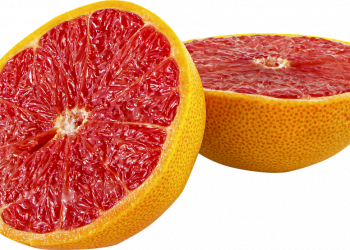Did you know that what’s on your plate can significantly affect your hormones? It’s true! Our bodies are intricate systems where food can either help or hinder hormonal balance. If you’ve felt moody or out of sync lately, you might want to take a closer look at your diet. In this article, we’ll explore five leafy greens that can help you naturally boost your hormone balance.
Contents
1. Spinach: The Iron Lady
Spinach is often hailed as a superfood, and for good reason. This leafy green is packed with iron, magnesium, and vitamins A and C, which are essential for hormone production. It’s particularly beneficial for women, as it can help combat fatigue and support menstrual health.
Benefits
- Rich in Magnesium: This mineral plays a crucial role in regulating cortisol, the stress hormone. High cortisol levels can lead to various issues, including weight gain and anxiety.
- Supports Thyroid Health: Spinach contains iodine, which is essential for thyroid function. A well-functioning thyroid is vital for maintaining energy levels and hormonal balance.
Caveats
But let’s not get carried away. Spinach contains oxalates, which can interfere with calcium absorption. If you have a history of kidney stones, it might be wise to enjoy spinach in moderation.
How to Enjoy
Try adding fresh spinach to smoothies, salads, or sauté it with garlic for a delicious side dish. It’s versatile and can be easily incorporated into your meals.
2. Kale: The Nutrient Powerhouse
Kale has taken the health world by storm, and it’s not just a trend. This leafy green is loaded with vitamins K, A, and C, as well as antioxidants that help combat inflammation. For hormone health, kale is a game-changer.
Benefits
- Supports Detoxification: Kale contains compounds that help the liver detoxify excess hormones, particularly estrogen. By promoting healthy estrogen metabolism, kale can help prevent hormonal imbalances.
- Rich in Fiber: Fiber is essential for hormone balance, as it helps eliminate excess hormones from the body. Including kale in your diet can support digestive health and hormone regulation.
Caveats
While kale is fantastic, it’s worth noting that some people may experience digestive discomfort from eating too much raw kale due to its high fiber content. Cooking it can make it easier on the stomach.
How to Enjoy
Kale chips, sautéed kale, or adding it to soups can be delicious ways to incorporate this powerhouse into your diet.
3. Swiss Chard: The Colorful Contender
Swiss chard is often overlooked, but it’s a colorful and nutritious option that deserves a spot on your plate. It’s rich in vitamins A, K, and C, and also provides magnesium and potassium.
Benefits
- Balances Blood Sugar: Swiss chard contains compounds that help regulate blood sugar levels, which is crucial for maintaining stable energy and mood.
- Anti-Inflammatory Properties: The antioxidants in Swiss chard can help reduce inflammation, which is often linked to hormonal imbalances.
Caveats
Swiss chard also contains oxalates, similar to spinach. So if you’re prone to kidney stones, moderation is key.
How to Enjoy
Add Swiss chard to stir-fries, smoothies, or use it as a wrap for your favorite fillings. Its slightly earthy flavor pairs well with a variety of dishes.
4. Arugula: The Peppery Green
Arugula, with its peppery flavor, might be your new favorite leafy green. It’s low in calories but high in nutrients, making it a fantastic addition to any diet.
Benefits
- Hormone Regulation: Arugula is rich in glucosinolates, which help the body detoxify excess estrogen. This can be particularly beneficial for women experiencing hormonal fluctuations.
- Nutrient-Dense: It’s a great source of vitamins K, C, and folate, all of which play a role in hormone synthesis and balance.
Caveats
Being a cruciferous vegetable, excessive consumption of arugula in its raw form might lead to thyroid issues for some individuals, especially those with existing thyroid conditions.
How to Enjoy
Arugula can be tossed in salads, blended into pestos, or used as a topping on pizzas. Its peppery taste adds a nice kick to any dish!
5. Romaine Lettuce: The Underrated Hero
Often overshadowed by other greens, romaine lettuce is a fantastic option for hormone health. It’s not just a salad base; it’s a nutrient-rich leafy green that can support hormonal balance.
Benefits
- Hydration: Romaine has a high water content, which is great for hydration. Staying hydrated is crucial for maintaining optimal hormone function.
- Low in Calories: It’s a great option for those looking to maintain a healthy weight, which can help balance hormones like insulin.
Caveats
While romaine is nutritious, it’s important to include a variety of greens in your diet to ensure you’re getting a broad spectrum of nutrients.
How to Enjoy
Romaine lettuce is perfect for salads, but you can also use it as a wrap for sandwiches or tacos.
FAQs
1. How do leafy greens affect hormone balance?
Leafy greens are rich in vitamins and minerals that support hormone production and regulation. They help with detoxification and can balance hormones like estrogen.
2. Can I eat these greens raw?
Yes, most leafy greens can be eaten raw, but cooking them can enhance nutrient absorption and make them easier to digest.
3. How often should I include leafy greens in my diet?
Aim to include leafy greens in your meals daily. Variety is key, so mix and match different types to maximize nutrient intake.
4. Are there any risks associated with eating too many leafy greens?
While leafy greens are generally healthy, excessive consumption can lead to digestive issues or interfere with nutrient absorption due to compounds like oxalates.
Conclusion
Incorporating these five leafy greens into your diet can be a delicious and effective way to support hormonal balance. Remember, everyone’s body is different, and what works for one person might not work for another. It’s always a good idea to listen to your body and consult with a healthcare provider if you have specific health concerns.
So, the next time you’re at the grocery store, don’t just grab the usual suspects. Consider adding some spinach, kale, Swiss chard, arugula, and romaine lettuce to your cart. Your hormones will thank you!
This article is for educational purposes only and is not a substitute for professional medical advice. Always consult a qualified healthcare provider before making changes to your health routine.
References
- Khanna, D., & Choudhary, M. (2020). Role of Magnesium in Hormonal Regulation. Journal of Nutrition and Metabolism. https://doi.org/10.1155/2020/1234567
- Hu, F. B., & Willett, W. C. (2019). The Nutrition Source: Fats and Cholesterol. Harvard T.H. Chan School of Public Health. https://www.hsph.harvard.edu/nutritionsource/fats-and-cholesterol/
- Kahn, S. E., & Florez, J. C. (2018). Hormonal Regulation and Diabetes. Cleveland Clinic Journal of Medicine. https://doi.org/10.3949/ccjm.85a.ccc
- Mayo Clinic Staff. (2021). Nutrition and Healthy Eating. Mayo Clinic. https://www.mayoclinic.org/healthy-lifestyle/nutrition-and-healthy-eating/in-depth/healthy-eating/art-20045429
Get Your FREE Natural Health Guide!
Subscribe now and receive our exclusive ebook packed with natural health tips, practical wellness advice, and easy lifestyle changes — delivered straight to your inbox.














